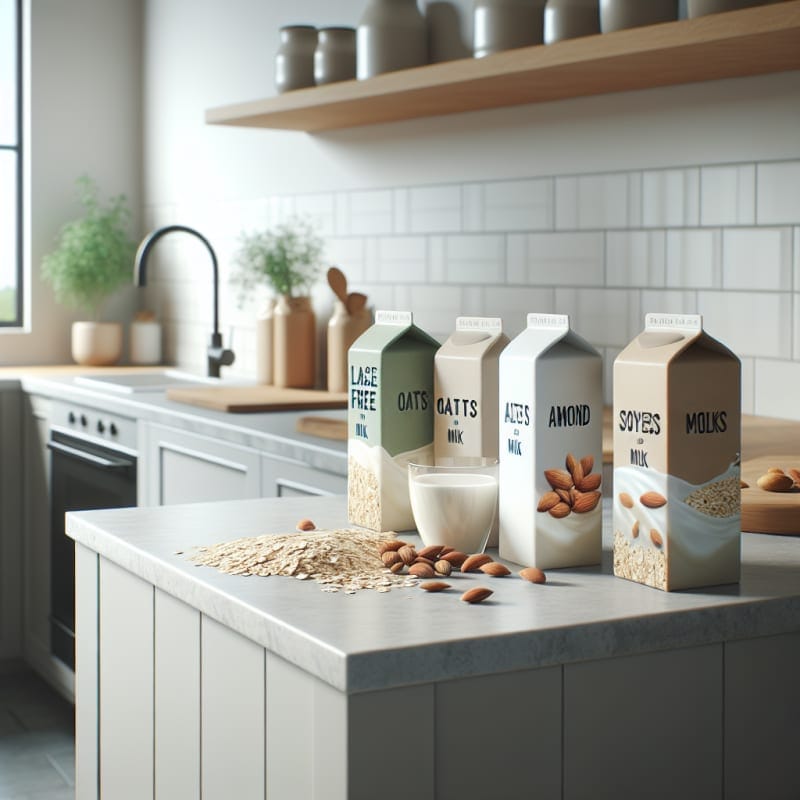Lactose-Free Milk 2025: The Latest Trends and Top Products for Milk Sensitivity
In 2025, the world of milk is undergoing a major transformation. As more people experience lactose intolerance or milk allergies, the demand for lactose-free milk and dairy-free alternatives has surged. From high-protein lactose-free dairy to next-generation plant-based beverages, innovation is reshaping how consumers enjoy milk without discomfort.
Whether you’re managing milk sensitivity, choosing sustainable options, or simply exploring new flavors, this guide covers the top dairy-free and lactose-free milk trends of 2025, the best brands, and how technology is making milk more inclusive than ever.
Why Milk Sensitivity Is Driving Change
Globally, more than 65% of adults experience some level of lactose intolerance. This condition, caused by reduced lactase enzyme activity, can lead to bloating, cramps, and digestive discomfort. Meanwhile, milk allergies—especially in children—are prompting families to seek safe, nutritious alternatives.
According to The Bullvine, the dairy sector in 2025 is witnessing “high-protein and lactose-free growth,” with major producers reformulating products to meet consumer demand for both digestibility and nutrition.
Top Lactose-Free Milk Trends in 2025
1. Fortified and Functional Lactose-Free Dairy
Traditional dairy brands are innovating with fortified lactose-free milk that includes added calcium, vitamin D, and probiotics. These products aim to support bone health and digestion while maintaining the creamy texture of real milk.
2. Plant-Based Milk 2.0
Plant-based milk has evolved far beyond soy and almond. The Global Plant-Based Milk Trends Report 2025–2032 projects a $25 billion market driven by oat, pea, and hemp milk innovations. These new formats offer improved protein content, sustainability, and taste, appealing to both vegans and flexitarians.
3. Hybrid Dairy-Free Formulations
One of the most exciting developments is the rise of hybrid milk—products that blend lactose-free dairy with plant-based ingredients. This approach delivers the nutrition of milk with the digestibility and sustainability of plants.
4. Personalized Milk Sensitivity Solutions
Consumers are turning to technology to find their perfect match. Apps like Food Scan Genius let users scan product labels to identify hidden lactose, milk proteins, or allergens instantly. This transparency empowers people to make confident, sensitivity-friendly choices.
“I’ve struggled with lactose intolerance for years. Food Scan Genius helped me find lactose-free brands that actually taste great and don’t upset my stomach.” — Maria L., Food Scan Genius user
Best Lactose-Free Brands and Products in 2025
| Brand | Product Type | Key Features |
|---|---|---|
| Lactaid | Lactose-Free Dairy Milk | Enzyme-treated, fortified with calcium and vitamin D |
| Oatly | Oat-Based Milk | Plant-based, rich in beta-glucans, sustainable production |
| Ripple | Pea Protein Milk | High in protein, low in sugar, allergen-friendly |
| Fairlife | Ultra-Filtered Lactose-Free Milk | High protein, low sugar, smooth texture |
How to Choose the Right Milk for Your Sensitivity
- Check for lactose-free labeling: Look for “100% lactose-free” or “lactase enzyme added.”
- Consider protein source: Dairy-based lactose-free milk offers complete proteins; plant-based options vary.
- Watch for added sugars: Some plant-based milks contain sweeteners to mimic dairy flavor.
- Use apps for transparency: Food Scan Genius helps identify hidden dairy ingredients and allergens.
Global Market Growth and Innovation Drivers
According to Dairy Reporter, the lactose-free and dairy-free segment is one of the fastest-growing in the global dairy market. Key drivers include:
- Aging populations: Older adults are more prone to lactose intolerance.
- Health-conscious lifestyles: Consumers seek gut-friendly, low-sugar, and high-protein options.
- Sustainability focus: Plant-based milks use less water and emit fewer greenhouse gases.
- Regulatory support: Governments are encouraging clear allergen labeling and transparency.
Lactose-Free Milk for Seniors
As digestion naturally slows with age, seniors often develop increased milk sensitivity. Lactose-free milk provides a gentle way to maintain calcium intake without discomfort. Many 2025 formulations include added nutrients for bone and muscle health, making them ideal for older adults.
Plant-Based vs. Lactose-Free Dairy: What’s the Difference?
| Feature | Lactose-Free Dairy | Plant-Based Milk |
|---|---|---|
| Source | Animal milk with lactose removed | Derived from plants (oats, soy, almonds, peas) |
| Protein Quality | Complete protein (all essential amino acids) | Varies by plant source |
| Allergen Risk | Contains milk proteins | Free from dairy, may contain nut or soy allergens |
| Sustainability | Moderate environmental footprint | Lower water and carbon footprint |
Consumer Awareness and Ingredient Transparency
Ingredient transparency has become a top priority. Many consumers now demand clear labeling and traceability. The Food Scan Genius app is helping bridge this gap by allowing users to scan barcodes and instantly see whether a product is lactose-free, vegan, or allergen-safe.
This shift reflects a broader movement toward personalized nutrition—where technology, health, and sustainability intersect to help consumers make informed choices.
Frequently Asked Questions (FAQ)
What is lactose-free milk?
Lactose-free milk is regular cow’s milk that has had the lactose sugar broken down by the enzyme lactase, making it easier to digest for people with lactose intolerance.
Is dairy-free milk the same as lactose-free milk?
No. Dairy-free milk contains no animal-derived ingredients, while lactose-free milk is still dairy but without lactose.
Which lactose-free milk is best for seniors?
Fortified lactose-free milk with added calcium and vitamin D is ideal for seniors to support bone health and digestion.
Are plant-based milks healthier?
It depends on the formulation. Unsweetened plant-based milks can be lower in calories and fat, but they may contain less protein than dairy-based options.
How can I find the right milk for my sensitivity?
Use tools like Food Scan Genius to scan labels and identify products that match your dietary needs and preferences.
Final Takeaway: The Future of Milk Is Inclusive
The rise of lactose-free milk in 2025 reflects a larger shift toward inclusivity, health, and sustainability. Whether you prefer dairy-based or plant-based options, the variety and quality of today’s products make it easier than ever to enjoy milk without discomfort.
As consumers continue to demand transparency and innovation, tools like Food Scan Genius will play a crucial role in helping everyone—regardless of sensitivity—make smarter, more confident food choices.





